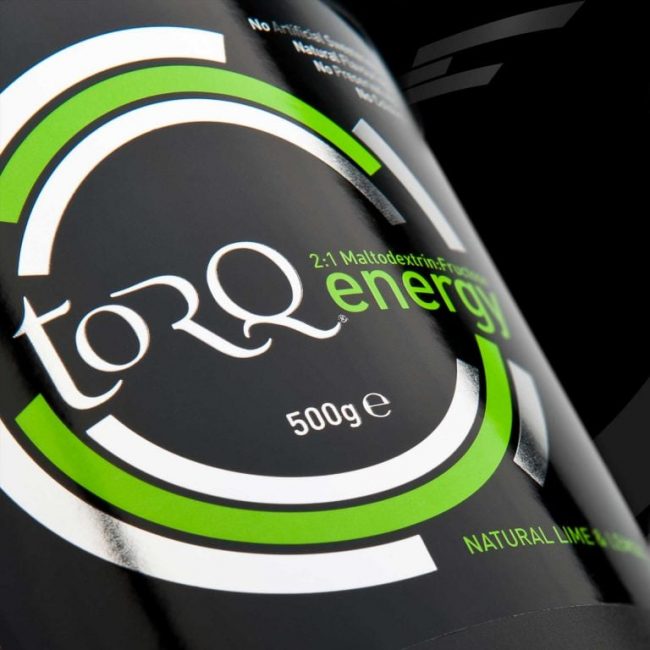Some time ago we wrote an article heavily criticising the concept of Electrolyte Tablets on the basis that they don’t fuel performance and aren’t particularly effective as a source of hydration either. They also contain artificial sweeteners, which are generally a hot topic of debate – at TORQ we choose not to use them. We don’t want to cover old ground too much, but we thought we’d raise the topic again in the context of the humble Energy Drink, because it seems really clear to us that if the electrolyte tablet had been invented first, should the energy drink have come along in its wake, it would have been lauded as the greatest breakthrough in exercise science for years…
Within this brief article we’re going to talk about how the carbohydrate in an energy drink not only fuels your performance, but also provides exceptional hydration characteristics through a process called ‘facilitated hydration’. Furthermore, we demonstrate how much of a no-brainer it is from a financial perspective to incorporate an energy drink over alternative fuelling methods. Everyone who rides a bike regularly should undoubtedly have a pouch of this golden formula in their cupboard. Please note that when we refer to ‘Energy Drink’ we are referring to a proper performance isotonic energy drink intended for use by athletes and physically active people, not the caffeine and taurine-charged leisure drinks that are driving our kids crazy!
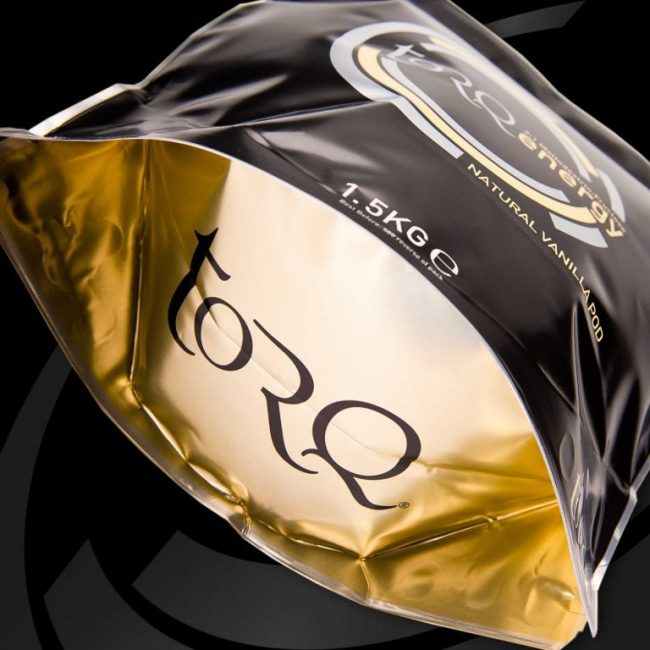
Since we’re referring to an energy drink here, let’s use our own isotonic TORQ Energy Drink as an example (why wouldn’t we). It contains all 5 electrolytes within research-recommended levels* (sodium, chloride, potassium, magnesium and calcium), which is more than most electrolyte tablets. Let’s not split hairs though and assume for the sake of argument that both our energy drink and an electrolyte tablet have the same electrolyte levels. Both products are added to 500ml of water, so its reasonable to conclude from this that the electrolyte and water content of the 2 drinks are exactly the same.
Let’s now look at the differences. An electrolyte tablet will also include some effervescent/bulking agents and perhaps some anti-caking agent as well as a calorie-free artificial sweetener of some kind. The result is a product with little or no calories in it at all. On the other hand an energy drink will contain a good measure of carbohydrate. In the case of our TORQ Energy Drink, every 500ml of energy drink contains 30grams of carbohydrate equating to around 120Kcals. There are no bulking agents, effervescent agents or anti-caking agents.
What does the carbohydrate do? It has 2 primary purposes. The first is to provide an exogenous source of fuel (exogenous means ‘from an external source’ so not from stores within the body) and this process is fundamental if you’re wanting to feel good and perform well in endurance activities. We could spend a long time explaining the concept, but it’s much easier for all of us if you take the time to watch this video:

So fuelling is very important. What if your exercise sessions are quite short and high intensity, surely all you need is hydration with no calories and this could easily be served by an electrolyte tablet? In principle this is right, because providing you’ve consumed a diet generally rich in carbohydrate and are well rested, you won’t need to take on exogenous carbohydrate for fuelling, because you’ll have sufficient stored away in your muscles and liver. There is however a 2nd primary purpose of carbohydrate and that is to assist in the hydration process. Once again, rather than rambling on, it’s much easier if you watch this very short video (it’s much briefer than the last one):

You will have noticed that this video talks about a product of ours called TORQ Hypotonic – this has since been renamed TORQ Hydration, but the formulation is identical, it’s just a re-brand. This product is specifically designed to be an optimal hydration solution for shorter workouts, but the principles of facilitated transport, whereby 260 water molecules are drawn into the blood with every glucose molecule, also transfer to our TORQ Energy Drink product making it extremely effective at delivering fluid despite the higher levels of carbohydrate. The take-home message for short intense workouts is that you could use an electrolyte tablet for these on the basis that you don’t need the carbohydrate for fuelling, but now that you understand the process of facilitated transport, wouldn’t you be better off using TORQ Hydration?
Let’s put these shorter sessions to one side now – I think we’ve made our point there – and concentrate on the longer endurance efforts where the fuelling benefit of carbohydrate cannot be ignored and this is where the humble energy drink clearly states its case. We have established that carbohydrate fuelling is required for longer distances and that an electrolyte tablet in 500ml of water doesn’t contain any. Therefore, in the knowledge that fuelling is required for their endurance effort, what does the electrolyte tablet user do? Some users may not even realise that their product contains carbohydrate, or won’t understand the importance of it and will of course bonk/hit the wall at the earliest opportunity (bonking or hitting the wall refers to the catastrophic loss of power experienced when the human body runs out of stored carbohydrate – it’s a terrible feeling). Assuming that they know that carbohydrate is important though, they will consume energy gels or bars to provide the fuelling component whilst using the electrolyte tablet for the hydration.
For the sake of argument, let’s assume that a desirable level of fuelling is 60g of carbohydrate per hour. It’s a fuelling level we always recommend to people as a starting point and our TORQ Fuelling System makes understanding this concept very straight forward, so please take the time to look into it. It’s actually possible through the use of 2:1 Glucose-Derivatives:Fructose (TORQ products) to deliver as much as 90g of carbohydrate per hour, but let’s ignore that for now. Based on our system whereby our gels, bars and chews each contain 30g of carbohydrate, if someone were to be consuming a drink made from an electrolyte tablet, they would need to also consume 2 of these items per hour to get their 60g of carbohydrate per hour. That’s fine as a fuelling strategy and there’s no reason why this wouldn’t work. The graphics below demonstrate how 2 gels would be required every hour to achieve 60g carb delivery per hour and the number of tablets (in 500ml water) would be manipulated depending on perspiration rates. ‘Cool’ and ‘Hot’ refer to the ambient temperature (linked obviously to perspiration rates).
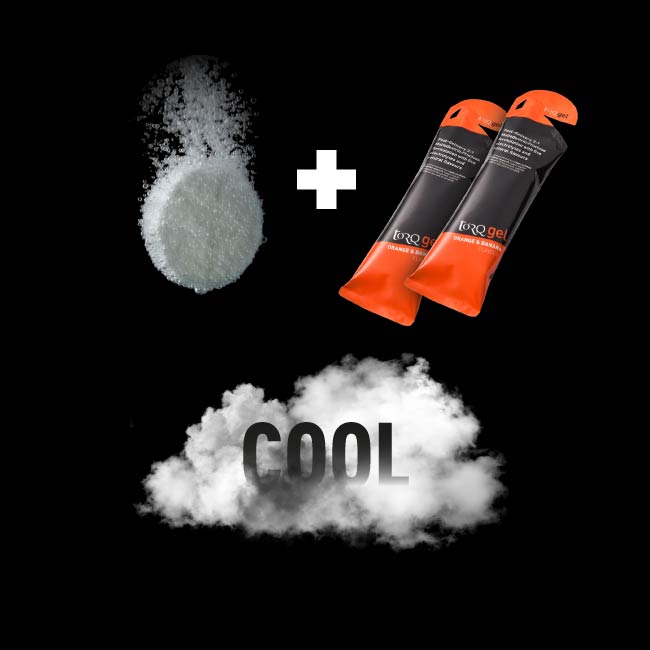
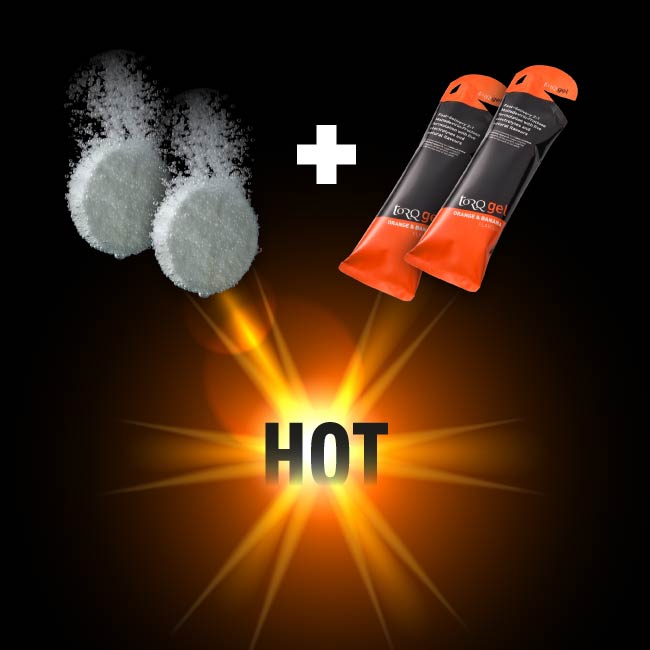
Now bear in mind that every 500ml bottle of TORQ Energy Drink contains 30g of carbohydrate. On a warm day, is it conceivable that you might drink 2 bottles (1 litre) per hour whilst you’re out on your bike? If you were to, you will have consumed all of the fluid and electrolytes you need, plus the 60g of carbohydrate you require too. The first thing that must strike you therefore is that it’s got to be more hassle to eat 2 energy gels/bars per hour than just to drink from your bottle which contains the energy already? Even if perspiration rates were lower and you only consumed 1 bottle (500ml) of energy drink per hour, you would still only need to consume 1 gel/bar instead of 2.
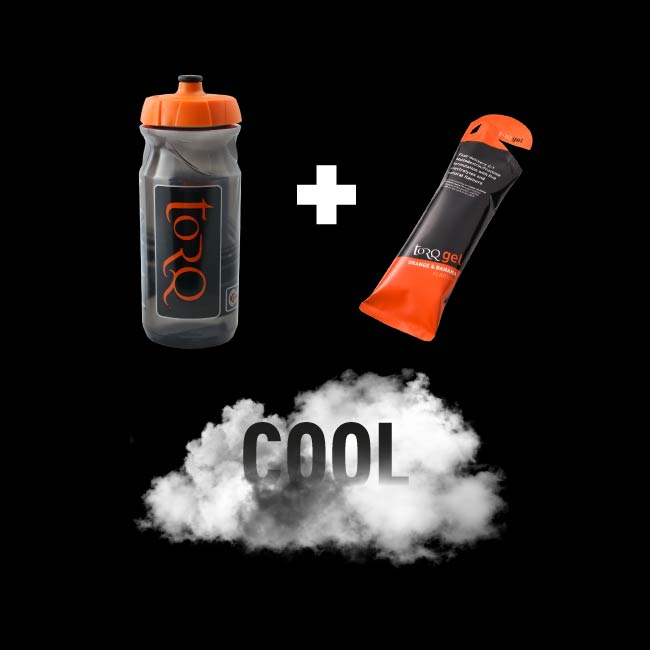
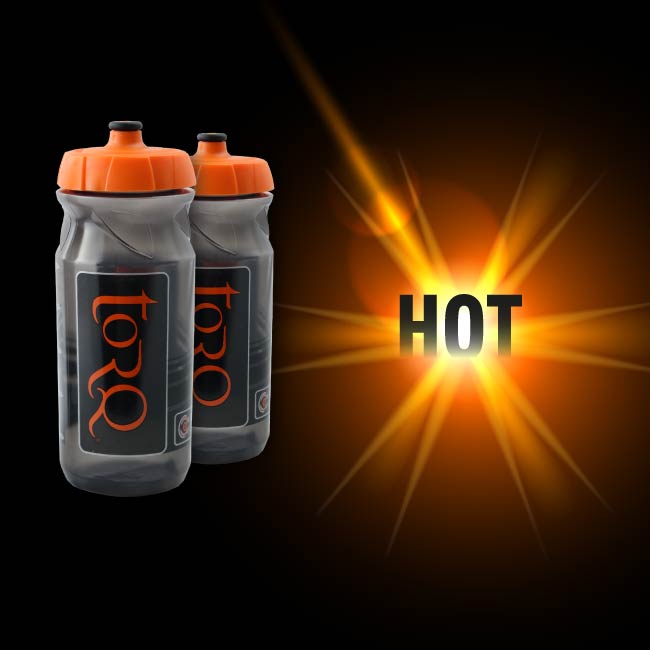
Now let’s look at the financials. Obviously the costs of energy products varies, as does their function and quality, so for consistencies sake, let’s stick with TORQ again and an assumed fuelling scenario using drinks and energy gels. The figures if you were using energy bars would be pretty similar. TORQ gels retail at £1.60 each. Electrolyte tablets vary, but major brands retail at £6.99 per tube of 20, which works out at £0.35 per tablet or 500ml. TORQ Energy Drink in a 1.5Kg pouch costs £27.99 for 45 serves, which works out at £0.62 per serve or 500ml.
Let’s look at 2 different scenarios – a cooler day where only 500ml of drink is consumed per hour and a warmer day where a litre of drink is consumed per hour. Both scenarios consider a 3-hour bike ride with 60g per hour fuelling.
First of all, let’s look at the cooler day (500ml drinking per hour):
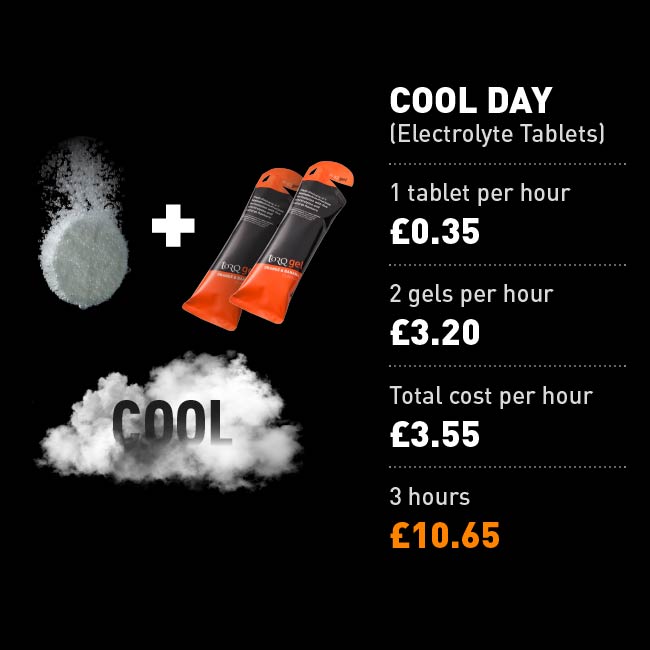
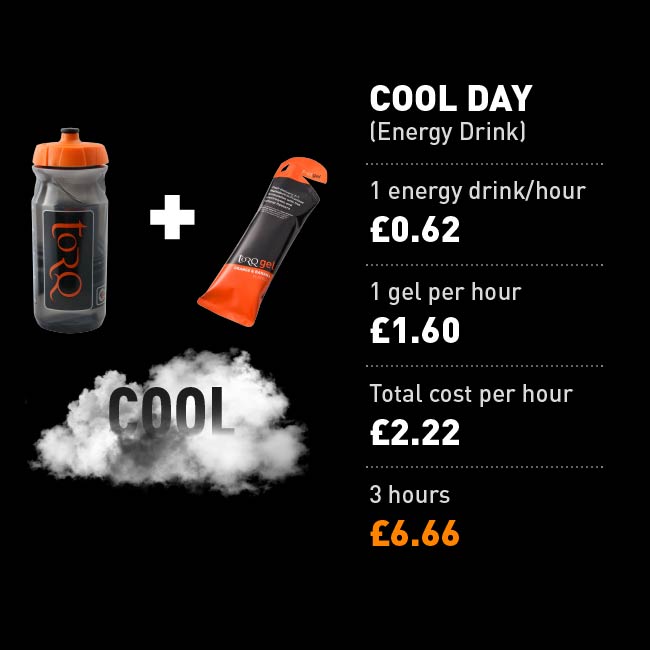
Now let’s look at a warmer day (1000ml drinking per hour):
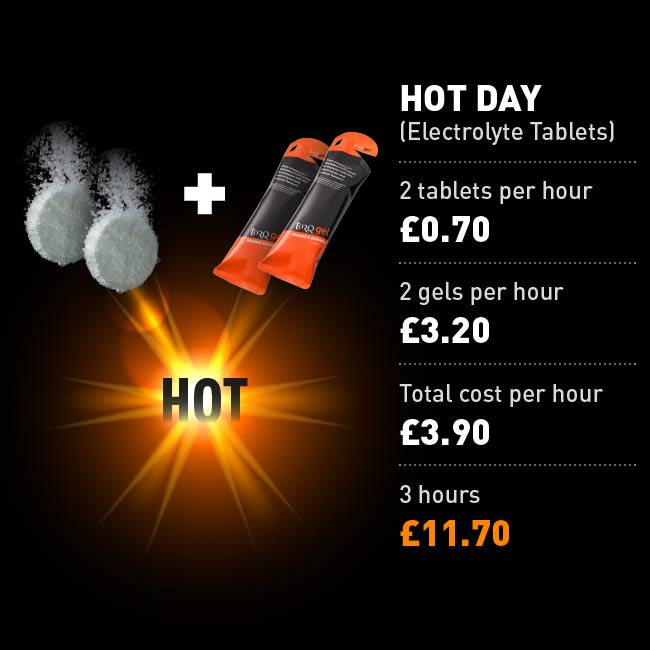
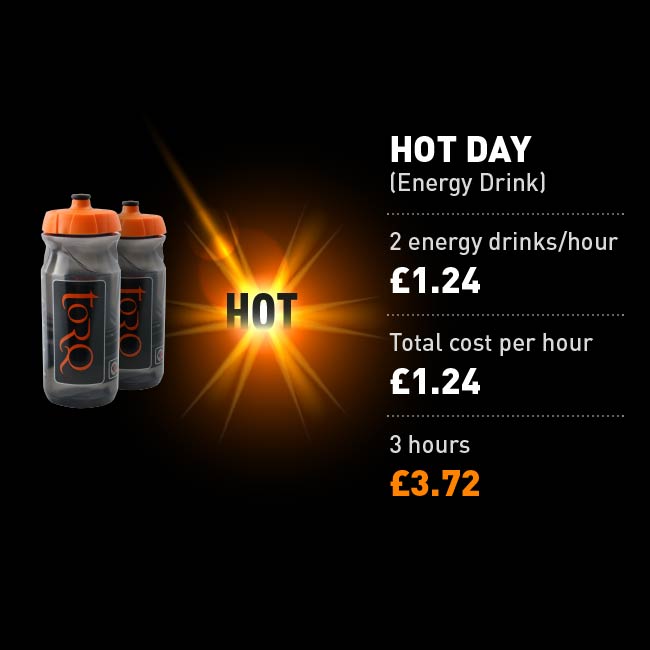
It’s quite shocking isn’t it? In every scenario, your fuelling is going to be significantly less expensive if you use an energy drink, but the higher the perspiration rates, the bigger the difference. We’re enjoying some fabulous weather in the UK at the time of writing this, so you’d be crazy not to be hydrating and fuelling on energy drinks!
This is why we encourage you to stock a variety of fuelling products at home to cover every scenario, but the most fundamental product has to be the humble energy drink. At £27.99 a 1.5Kg pouch of TORQ Energy Drink doesn’t sound cheap, but it will save you a significant amount of money in the long run. We’re not telling you to avoid energy gels and bars, because they become essential fuelling tools when perspiration rates are lower, but at least some of your energy should always be being delivered by an energy drink. Take the time to read/watch our videos explaining the TORQ Fuelling System to understand how to combine your energy drinks with more concentrated fuelling sources.
Just imagine if the electrolyte tablet had pre-dated the energy drink and we’d just launched the TORQ Energy Drink – wouldn’t you be saying ‘WOW! TORQ have brought out a product that’s an electrolyte tablet combined with a gel all in one – it’s a REVOLUTION!’ Well, we need to make it a revolution – please help your cycling buddies by sharing this post. Knowing that TORQ Energy Drink contains all 5 electrolytes, hydrates optimally through the facilitated transport process and also contains the same energy as a gel, all for £0.62 per serve has to be something worth shouting about doesn’t it? We have never ever understood the fascination with electrolyte tablets and will not make one, so perhaps now you know why.
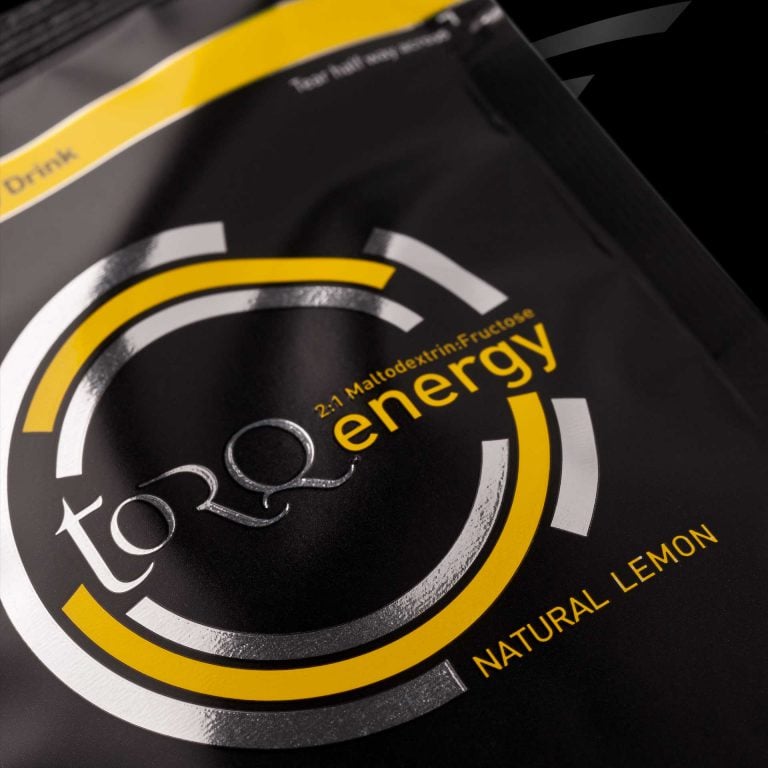
There’s one final small detail to cover and that’s the convenience aspect. Couldn’t one argue that electrolyte tablets are really easy to carry on your bike, so when you need to re-fill, you can just take a tablet out of your tube and pop it into the water? Well, we can answer that one quite nicely at TORQ, since we’ve always understood cyclists’ needs – it’s called the TORQ Single Measure. Pictured below, we produce small robust reusable aluminium canisters which will hold exactly the right amount of powder for a 750ml bottle, so you just dip it into your pouch, brim fill it and screw the cap on. Take 2 of these with you in your back pocket and start out with your 2 full 750ml bottles and there’s the 3 litres of energy drink you need for a big ride. In terms of weight, this would be much less than a tube of 20 electrolyte tablets and 6 gels! Further details on our Single Measure canister are HERE.
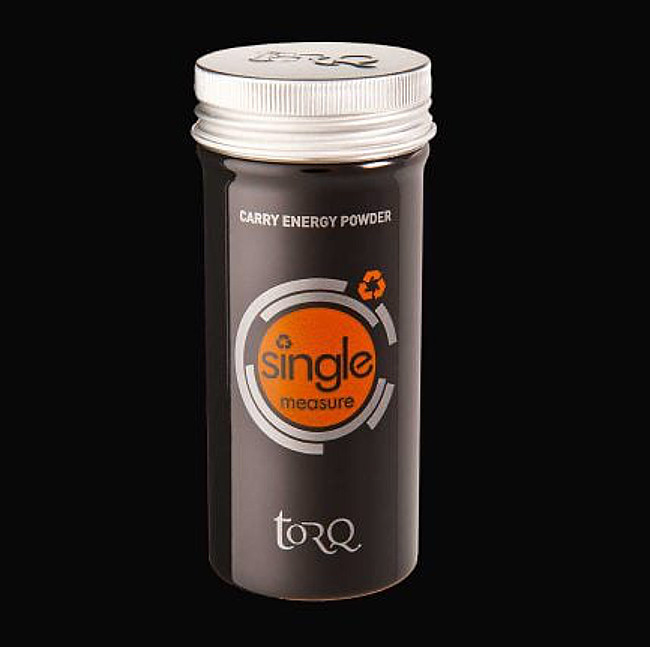
If you enjoyed this article, you should read the original publication on the subject of electrolyte tablets HERE.
If you would like to purchase TORQ Energy Drink, either search for one of our dealers or click HERE to purchase from our online store.
